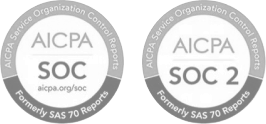The 8 pillars of a global payroll strategy
Article Navigation
Even before the arrival of the devastating COVID-19 pandemic, global organizations had long been exploring ways to optimize the hiring and management of their teams. We use the word teams because organizations can hire different types of workers.
Not everyone is or needs to be a full-time employee to be hired. The most common type is the full-time employee. But there are many other categories including part-time, casual, fixed-term, shift workers, daily or weekly hires, apprentices and trainees as well as freelancers and consultants.
Why global organizations need to consider a global payroll strategy
Now well within the second year of the pandemic, there has been a significant rise in remote work and the desire and ability to hire from anywhere.
Remote work brings about the existence of the remote worker. This is someone who is employed by a company but works outside the traditional office environment. The person may work from home, at a coffee shop and even be based in a different city around the world.
The growth in remote workers has been supported by an increase in the range of tools and resources available to support a geographically diverse workforce.
Naturally, global organizations would consider whether they need to develop a global payroll strategy.
But first, what is payroll?
The term is used in a number of ways. It has been used to refer to a list of employees who receive compensation for the work they do. It also refers to the money that is paid to employees (sometimes referred to as their salary or wage). It can also refer to the department that manages payroll or the software that is used to process payroll.
What, then, is a global payroll strategy?
It is the central management of an organization’s entire payroll function for all its locations. Organizations in one location may need to compensate employees who are working in a different location.
This is a critical strategy to develop because payroll is an important part of an organization’s business activities. It is a recurring activity and expected to be conducted accurately and securely. Everyone relies on timely and accurate payment of their wages, and for this, organizations need to do a few things well.
The organization needs to document and maintain accurate employee records. Typically, this is the task of the payroll department. The department needs to ensure that they are up to date on any changes that may impact payroll. They need to understand appropriate filing procedures and any withholding requirements.
With large teams, multiple offices and locations and even sophisticated wage calculations, a fair amount of paperwork and processing is to be expected. When you add different languages, laws and currencies to the mix, it can be complicated, time-consuming, even a nightmare to manage well.
As such, there are certain characteristics that define an effective global payroll strategy.
1. An effective global payroll strategy automates as much as possible
In short, it involves the use of technology to monitor, control, produce and deliver products and services. This can be especially beneficial for repetitive tasks or where accuracy is critical.It is also, where applicable, an effective approach to cost containment.
Automation saves time, leads to increased productivity and reduces error. Keeping data and process consistent supports the standardization of reporting and deriving insights as needed.
2. An effective global payroll strategy relies on technology and digitization to streamline and minimize redundancy
Typically, this means the strategy relies on a SaaS (software-as-a-service) platform. A SaaS (software-as-a-service) solution is one where a cloud provider hosts the application online and makes it available to the customer over the internet. With some large companies, the cloud provider is also the software provider.The service uses a multi-tenant approach which means that a single instance of the application runs on the host servers and in that single instance, supports each customer.
There is one version of the software application and one configuration for all customers (or tenants (which means a common infrastructure for all ). But customers need not worry because the data for each customer is segregated and protected. This works well because, with a single instance, the provider can take care of updates, maintenance issues or any problems in the one instance as opposed to across multiple instances.
Technology, the digitization of records and data management provide significant savings for many reasons. A SaaS solution eliminates the upfront cost of hardware purchases, maintenance and updates. Your organization is able to access robust software on a pay as you go model.
Additionally, organizations are supported by digital workflows and anytime anywhere access. These all support easier and quicker access for teams and the ability to collaborate and share information, get sign off as well as determine sharing or access protocols.
Digitization of all information creates a repository of data while also preventing much of the human error due to a manual approach. It is an upfront investment that keeps on giving.
3. An effective global payroll strategy is centralized to ease management
This would sit on a single native (which means it is developed exclusively for that) platform.There are multiple aspects to payroll. To ensure employees are paid for the time worked, calculating payroll involves gross pay less any deductions that need to be made. These deductions could be for taxes, insurances, mandatory contributions or garnishments. There are tax records and filings to make, compliance with local regulations as well as time and attendance tracking.A centralized system ensures the payroll team has access to what they need when they need it.
With reference to different types of workers, there is one more category. Let’s say that an organization is keen to hire but does not necessarily want to commit to defining the hire as a full-time employee. In such a situation, an Employer of Record (EoR) may apply.
Global organizations need options that can help simplify hiring decisions. An EoR provider assists with this by hiring a worker on behalf of the customer (the organization). This means that the EoR takes on the legal responsibility for the hire. With these different types of workers and the fact that global organizations would have different languages and currencies they operate with, it becomes even more advantageous to manage everything on a single platform.
4. An effective global payroll strategy considers data security and privacy as paramount
Their security would be second to none i.e. incomparable and dependable. Personal information about workers are collected, retained and updated over long periods of time. Corporate financial records are also required to be retained for years to meet tax and compliance requirements.Understandably, data security and privacy are ongoing key concerns.This is even more so when all of the data resides on a central platform. With all your eggs in one basket, an organization cannot afford to take chances or cost-cut to its detriment. You need a trusted partner and solution.
5. An effective global payroll strategy drives compliance
When managing something as complex as payroll across multiple jurisdictions, laws and currencies, compliance is the way that an organization ensures that it is protected from multiple risks.By agreeing to and enforcing a set of processes and rules, the organization ensures it meets its most basic obligations, which builds trust.In turn, this protects them from reputational or financial damage. A global payroll solutions partner, ensures that, regardless of location, they are aware of and drive compliance as expected by their customers.
6. An effective global payroll strategy enables scale and flexibility
As an organization grows across regions or countries, the complexity grows in tandem. This is when it becomes incredibly obvious how a global SaaS solution brings significant advantage and ease.Not only are you able to manage everything on a centralized dashboard, but organizational growth does not create significant administrative issues.A solution that provides flexibility and scale can rise to meet your expansion needs. Understanding the different aspects of the global payroll process ensures that when a solution is reviewed, it is able to prepare the organization for such growth.
7. An effective global payroll strategy supports integration
Why is this important? When an organization looks to transform their global workforce strategy, they will look at analytics tools as well as ways in which they can improve processes through automation or machine learning.They will be concerned with how best to manage multiple HR data systems and so, integration becomes a key concern. This simply means the ability to unify all HR data including payroll so that the organization is truly able to support their global workforce strategy.
8. An effective global payroll strategy will be evidenced by satisfied employees
How do you know if your strategy works? For global payroll, this is simple: satisfied employees. Employees who are receiving their pay at the right calculations and on time, consistently.
For the reasons above, global businesses can reap tremendous benefits by implementing a global payroll strategy.
#globalpayroll #payrollstrategy #HRSaaS #globalpayrollintegration
If you would like to see what global payroll integration can do for your organization or have questions about any of the issues above, please contact us for an obligation-free discussion.






























